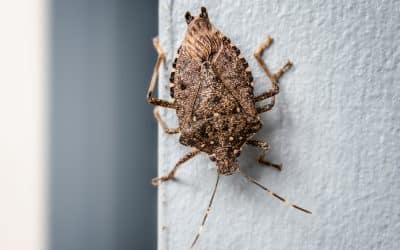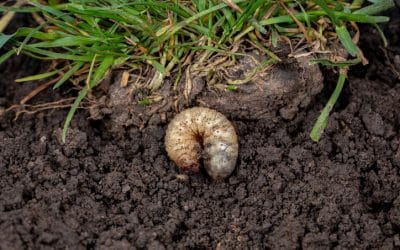
Pest Identification: Silverfish
Silverfish, named for their silvery color and fish-like shape and movements, are found throughout the U.S., particularly in moist, humid areas of homes like bathrooms, basements, and attics. They are also called bristletails due to their three long, bristle-like appendages at their rear. These insects are secretive, often causing unnoticed damage.
Adult silverfish are about ½-3/4 inch long, excluding the tail, with a teardrop, carrot, or fish-like body shape. They have flattened bodies, scales, threadlike antennas, and small, widely separated compound eyes. Immature silverfish resemble adults but are smaller and develop scales after a few molts.
Silverfish are wingless but fast runners and good climbers, surviving for weeks without food or water in high humidity environments (70-90%). They are nocturnal, hiding in tight spaces during the day. Females lay 1-3 eggs daily in hidden spots, with development taking 3-4 months in ideal conditions (72-90°F, 50-75% humidity) or up to 2-3 years otherwise. They can live up to three years.
Their diet includes paper, glue, clothing, and food items like flour and oats, preferring proteins over carbohydrates. They are also cannibalistic. Silverfish are found throughout homes, including living rooms and bedrooms, and thrive in room temperatures (70-85°F). They breed in various areas, like wall voids and attics, and are also common in commercial buildings.
Signs of infestation include feeding marks, yellow stains, scales, and feces on damaged materials. While silverfish don't pose a physical threat to humans, they can damage property, especially paper-based items. They can squeeze through tiny gaps, jump 2 feet vertically, and climb most surfaces except smooth, shiny ones.
Silverfish have a lifespan of 3-6 years, longer than most insects. They continue molting throughout adulthood, leaving behind thin, metallic silver exoskeletons that indicate infestation. These ancient insects have existed for over 400 million years. Their mating process is unique, involving a chase dance and prolific egg-laying, leading to rapid infestations.

Buzzwords
Flea FAQs: What You Need to Know
We’ve all been there: that tiny black spec…did it just move? If you’re a homeowner, few things can spark panic faster than spotting a flea in your carpet, on your bedding, or crawling on your pet. Fleas are annoying, but they also bite, can spread disease, and turn...
Bug Off! Keeping Stink Bugs Out of Your Home
Fall in New England brings crisp air, colorful leaves, and stink bugs. As soon as the temperatures start to dip, stink bugs start searching for a cozy spot to ride out the winter, and your home is often their top choice. Unless you know how to stop them. With a few...
Protect Your Lawn: What You Need to Know About Grubs
You work hard to maintain a beautiful yard. But if you start noticing unexplained patches or spongy turf, grubs might be the culprit. These pesky beetle larvae feed on grass roots, turning lush lawns into a patchy mess. Bottom line: they are a threat to your yard....


